Cultivate’23: State of the Industry
One of the most fruitful hours I spend at AmericanHort’s Cultivate event each year is the Monday morning keynote session—the annual State of the Industry address, featuring the association's President and CEO Ken Fisher, governmental and regulatory guru Craig Regelbrugge, and our industry’s well-respected chief economist Dr. Charlie Hall of Texas A&M. As they do every year, each took a high-level look at our industry and offered commentary based on their area of expertise.
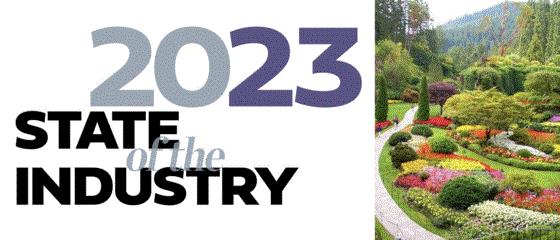
I’ll leave the government relations content coverage to Jen Zurko and her “JZ on DC” editorial (one of the most important columns in GrowerTalks each month) and focus on what Ken and Dr. Hall had to say. Here are some highlights, starting with potential threats, then moving to positive recent data:
-
We need more workers! Statistics show 1.6 open positions for each unemployed person.
-
Consumer spending is in a precarious place, as personal savings rates have fallen to below 2019 levels.
-
Climate change impacts, such as water restrictions in the West, are a threat.
-
Horticultural research is at risk, due to the continued shrinking of land grant university programs.
-
Economic challenges like interest rates, tax issues and regulatory problems can hit us hard. We must protect our interests!
But …
-
Our industry may be experiencing ebbs and flows, but builders are building, landscapers are installing, and consumers are buying.
-
Spring 2023 was good for most in our industry, with 76% of growers reporting increased sales over 2022.
-
100% of growers surveyed said sales are up compared to 2019.
-
Bottom line profit was up for 69% of growers surveyed.
-
78% reported unit sales were up.
-
Transaction counts are still up for garden center retailers surveyed, meaning we are keeping some of the new shoppers gained during the pandemic.
-
The supply chain seems to be back to normal, and forecasts show we can expect input costs to rise about 1.6% in 2024. But costs have risen 22% in the past three years, so if prices aren’t increased, profit margins will shrink.
-
The U.S. has an historic population of people between the ages of 25 and 35, which bodes well for future spending on housing and, in turn, horticulture.
-
Excess savings (or “capacity to spend”) is still high for middle- and upper-class Americans—our core customers.
Remember, these are just data points gleaned from surveys and reports (and interpreted by intelligent market researchers and industry leaders) and not always hyper-localized to your community, customer base or specific operation. Your reality is just that—YOUR reality, so watching the trends, participating in local government and staying close to your customer base is always your best strategy.

Nick’s Tip of the Week: Planning for Pythium on Poinsettias
Each week, I’ll work with my buddy Nick Flax, a technical services expert at Ball, to share a concern that’s come up during one of his numerous calls with growers across North America. This week, he’s going to help prepare you and your poinsettia production team for a fairly common issue he deals with each year when weather cools down and late-season root rots can occur.
PROBLEM: It may seem strange to discuss a cool-season issue when temps are blazing across most of North America, but I want to help you prepare and have a plan of action in place. As environmental condition change in fall and most of you are starting to ship mums and pansies, there’s still a month or so to go on poinsettia crops and you can’t let your guard down. If you do, problems can occur, such as … Pythium.
In the greenhouse, we generally group Pythium (and members of this genus that were recently reclassified as Globisporangium) based on their optimum temperatures for causing disease. Warm-season Pythium is an issue we’ve covered before in this newsletter, but when we head into cooler weather there’s also a risk. Here are a few tips for managing cool-season root rot diseases on your poinsettias.

NICK’S TIP: Cooler days and nights mean your crops are at lower risk of getting heat delay, but remember that your cultural practices need to adapt to changing environmental conditions. Although, we’re still experiencing warm (or HOT) temps, you’re reading this in plenty of time to get out in front of the changing weather.
-
Reduced water movement. Shortening daylength, cooler air temps and less-intense sunlight mean plants will be taking up water more slowly and transpiring less. Monitor soil moisture diligently and reduce irrigation volume as we get further into fall to avoid prolonged periods of saturated media or “wet feet,” which are ideal conditions for root rot.
-
Elevated soluble salts. As temps drop and water uptake decreases, fertilizer salts can more easily accumulate in your growing media. Though poinsettias are generally considered “high feeders,” be sure to check your substrate EC regularly, as high salt levels in your soil can damage roots and predispose your crop to attack from Pythium.
-
Higher disease pressure. The longer crops stay wet and the longer they’ve been in your greenhouse, the greater the chances that root rot will strike. Pythium preventatives, conventional chemistries and biological products alike all have a range of efficacy windows and prescribed reapplication times. Consider re-upping with your favorite root-zone protectant at closer intervals within the labeled range to keep ahead of disease pressure. For example, if the label says to reapply every 4 to 8 weeks, consider reapplying every 5 to 6 weeks under prolonged periods of cool temps if media is staying wet.
-
Considerations for biologicals. Trichoderma-based products like RootShield Plus or Obtego are powerful tools for controlling root rot on poinsettias. However, efficacy of these kinds of products hinges upon maintaining a higher population of beneficial microbes than pathogens in the root zone, in order to outcompete them. As such, they may need to be reapplied more frequently than some conventional chemistries for maximum disease control. If you’re giving these types of products a try for the first time this year, be sure to double check the label and reapply within the proper timeframe to achieve the highest level of disease control.

NEW PODCAST EPISODE! Insecticide Rotation with JC Chong
I just uploaded Tech On Demand podcast episode #70, and it is PACKED with excellent information for those of you implementing pesticide rotations and looking for some guidance to help make the best decisions. Be sure to subscribe to the podcast on your favorite app like Apple, Spotify, Google, Stitcher, Audacy and just about all others. That way you'll never miss an episode.
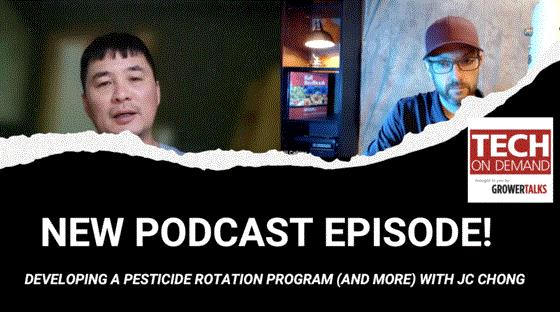
In DEVELOPING A PESTICIDE ROTATION PROGRAM (AND MORE) , I’m joined by Dr. JC Chong, technical development manager at SePRO (and editor of sister e-newsletter PestTalks) to discuss the importance of pesticide rotation programs and how best to put the puzzle together. Rotating chemistries and modes of action not only gives you an effective approach to eliminating pests but helps ensure you can use the best products for years to come—without resistance and loss of sensitivity to pests.
We dig into exactly why resistance programs are critical to reducing resistance and why resistance leads not only to reduced options and crop issues but also higher costs. Then we move into resources and tips to navigate the aforementioned puzzling world of insecticide rotation. JC explains why rotating modes of actions and not trade names is necessary, as well as how many modes of action should be used in an effective rotation. Finally, we go even deeper into how you can customize rotations for your needs using the tools and resources JC employs when he consults with greenhouse and nursery growers.
Because JC is an awesome insect and mite pest expert with more than 15 years as a professor and researcher, I took the opportunity to pick his brain on a current hot-button topic: Thrips parvispinus, the species that led to quarantines in Florida and spread to many states on tropical plants in 2023. JC offers his expertise on the pest, his outlook for Fall 2023 and 2024, and a new rotation program he developed at SePRO that’s available to download if you need to battle this particular pest.
Here are links to a couple key resources we discussed during the podcast:

PGRs for Northern Growers
Thinking back on what I’ve seen and heard this year when visiting greenhouses, attending seminars and talking to growers, a few topics come to mind. One is plant growth regulators (PGRs) and the need to always have access to the best and latest information and advice based on research trials and general guidance for making solid decisions on what to use and when. The Tech On Demand team and our industry partners will be working on new multimedia resources related to PGRs in 2024.
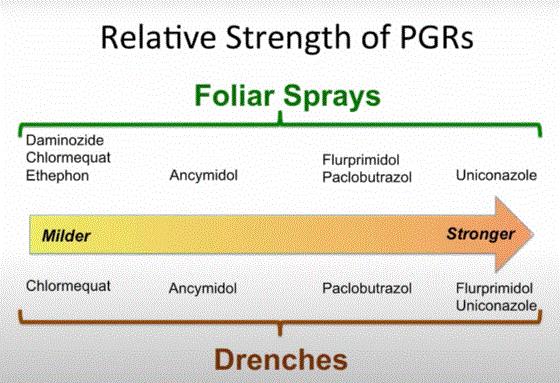
While looking into resources online, I immediately found this video released a few years ago by our friends at e-GRO titled PGR TIPS FOR NORTHERN GROWERS. Presented by Dr. Brian Whipker of NC State (one of our industry’s top PGR experts), I thought it gave a thorough, yet very understandable run-down on how to avoid issues related to overuse, as well as a concise overview of the different active ingredients on the market.
NOTE: This specific presentation is geared to growers in northern climates, because use and rates are quite different in cooler and warmer regions.
In this video, Dr. Whipker covers ways to avoid and overcome overapplications, tips for stimulating growth, low doses for growth control, late-season applications and strategies for balancing phosphorous and PGRs.
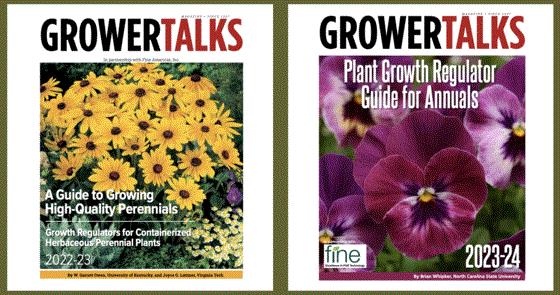
For even more on PGRs for annuals and perennials, make sure to bookmark these two comprehensive GrowerTalks special editions:
- 2023-24 PLANT GROWTH REGULATOR GUIDE FOR ANNUALS
- 2022-23 GROWTH REGULATORS FOR CONTAINERIZED HERBACEOUS PERENNIAL PLANTS

PLANT HEALTH: Know Your Nitrogen
When training new team members on plant nutrition, there’s always a point in time when you attempt to explain how to interpret the numbers on the fertilizer label. For many who’ve been doing this for years, it makes total sense—but it’s certainly not straightforward. As you work with new growers (and make tweaks to your nutrition plan for next season), here’s a fantastic resource to keep on hand.
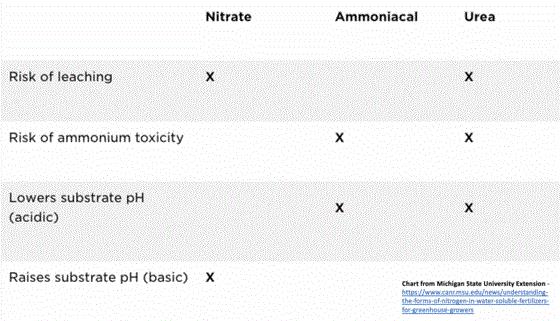
In UNDERSTANDING THE FORMS OF NITROGEN IN WATER-SOLUBLE FERTILIZERS FOR GREENHOUSE GROWERS, authors Jaden Gimondo (Michigan State Extension) and Erik Runkle (Michigan State Hort Department) recently wrote a concise and understandable primer explaining how to interpret fertilizer labels and calculate nitrogen based on its form. They walk you through the differences between nitrate nitrogen, ammoniacal nitrogen and urea nitrogen before advising on which form to use when (complete with a handy chart).
Finish Line ...
As soon as I’m done writing this newsletter, I’m packing my bags and heading over to West Chicago for the annual Ball Customer Days, one of my absolute favorite events of the year. Being in the Gardens at Ball with thousands of greenhouse professionals and co-workers is energizing—and a lot of fun! This year promises to be amazing. Reports coming out of the office indicate the two-day event will see record attendance and the gardens are in full bloom and looking phenomenal.
By the time you read this, the event will be underway and I’ll be manning a table in the Ball café sharing Tech On Demand resources and talking to as many of you as possible (I’ll report back on the event next week). As I was gathering stuff to take with me, I grabbed a stack of old Ball Red Books, specifically the 5th, 9th and 11th editions from 1941, 1957 and 1965, to have on the table for folks to flip through. I love old books, and in the course of packing I got completely distracted and started paging through them, looking at photos and reading the words of the great Vic Ball. In doing so, I found something I just had to share, because it's as relevant today as it was when Vic wrote it in 1957:
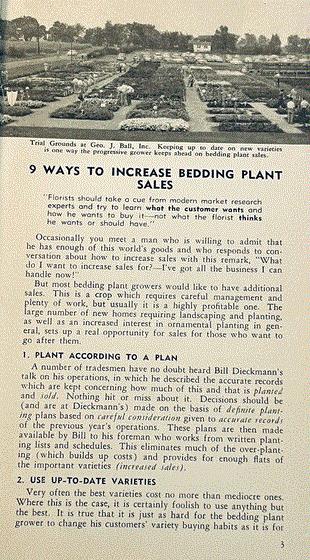
9 Ways to Increase Bedding Plant Sales
-
Plant according to a plan
-
Use up-to-date varieties
-
Don’t offer too many or too few varieties
-
Grow quality plants
-
Display your product
-
Use the right growing-selling containers
-
(Publish) your list
-
Have an “open house”
-
(Create) well-prepared advertising
Right?!? Honestly, Vic’s nine tips, written 66 years ago, might as well be reprinted and restated every year.
You know what they say: The more things change, the more they stay the same …




Please feel free to send your comments, constructive criticism and topic ideas to me at bcalkins@ballhort.com.

Bill Calkins
Editor - Tech On Demand
This email was received by you and 26,178 other fine subscribers!
If you're interested in advertising in Tech On Demand, contact Kim Brown ASAP and she'll hook you up.